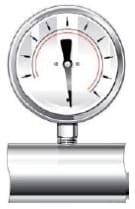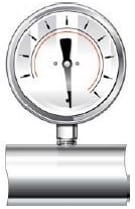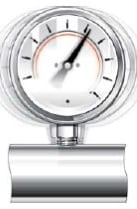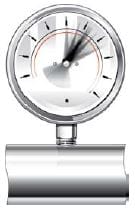Best Practice: Pressure Gauges - Part 1
Best Practice: Pressure Gauges - Part 1
Pressure gauges are sensitive instruments that utilize either a Bourdon tube or diaphragm to sense system pressure. Swagelok industrial pressure gauges are available with a variety of end connections, and are configurable with a wide range of options. When configuring a pressure gauge, operating pressure and gauge maximum pressure should never be the same. Rather, gauge pressure, in terms of accuracy, should operate in the middle of the configured pressure range. The following are guidelines to help you troubleshoot some of the most common issues we’ve heard from the field.
Resolve Gauge Overpressure Problems

Symptom: A pointer is pegged against the stop pin; the gauge is operating near or past the maximum pressure.
Possible Cause: A gauge with the incorrect pressure range for the application is incapable of accurately reflecting the system pressure.
Possible Result: The Bourdon tube ruptures, causing complete gauge failure; system media is released into the environment, causing media loss and potential injury.
Possible Solution: Select a gauge rated to 2X the normal system operating pressure to provide a larger window of measurable pressure; in extreme cases, use a diaphragm seal solution with a super restrictor (0.3 mm) for a more robust solution.
Avoid Gauge Pressure Spikes

Symptom: A bent, broken, or nicked pointer.
Possible Cause: A pump cycling on/off or a valve being opened/closed, causing a spike or sudden drop in the system pressure.
Possible Result: An abrupt increase/decrease in pressure, leading to a Bourdon tube rupture and gauge failure; system media is released into the environment, causing media loss and potential injury.
Possible Solution: Evaluate system design to eliminate unpredictable spikes; select a gauge with a broader pressure range to accommodate expected spikes in pressure.
Minimize Gauge Mechanical Vibration

Symptom: A missing pointer, window, window ring, or back plate; black dust on dial; scrapes on dial from loose pointer.
Possible Cause: Misaligned pumps, reciprocating compressors, or a poor fixture mount, causing an excessive amount of vibration.
Possible Result: Vibration breaks movement and the movement no longer anchors the Bourdon tube; failure of the Bourdon tube and gauge; system media is released into the environment, resulting in media loss and potential injury.
Possible Solution: Use a liquid case fill to dampen movement; eliminate/reduce avoidable vibration in system; in extreme cases, use a snubber or a diaphragm seal with an internal restrictor (in place of a Bourdon tube style gauge) for a more robust solution.
Reduce Gauge Pulsation

Symptom: A fluttering pointer.
Possible Cause: Dynamic (cyclic) loading wears movement components down or system media is rapidly cycling through the system, affecting the ability of the gauge to measure pressure.
Possible Result: The Bourdon tube ruptures, causing complete gauge failure; system media is released into the environment, resulting in media loss and potential injury.
Possible Solution: Redesign the system/reposition the gauge to reduce the cycling speed seen by the gauge.
The performance and longevity of your pressure gauges relies on system design, correct product selection, and on-going maintenance. Be sure to establish a program to replace failed gauges in your facility, and increase the amount and depth of training on gauge maintenance. Need help? Give us a call today -> 403-243-5646
Industrial Pressure GaugesPressure Gauges for Panel Builders


